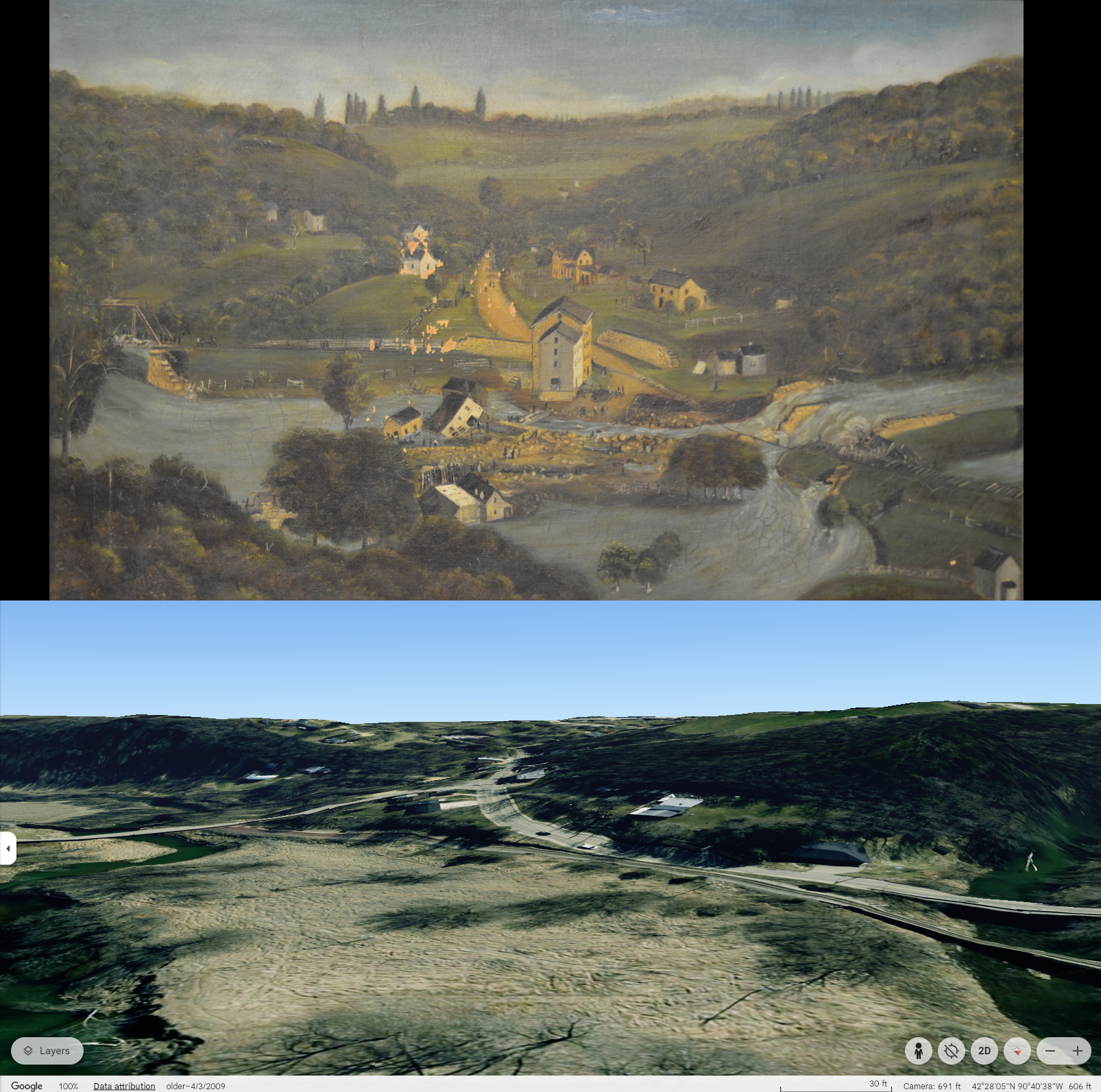On the morning of July 5, 1876, the residents of Dubuque awoke to terrible news. The dam at Rockdale had failed due to torrential rain and flooded the community in the curve of Catfish Creek. Ultimately, thirty-nine individuals in the village lost their lives.
Upon hearing the news, eighteen-year-old John J. Kavanaugh (1857-1937) likely gathered an easel, paints, and brushes and made his way down from the Kavanaugh estate on Whiskey Hill, near modern day Murphy Park.
As Rockdale neighbors tried to locate survivors and start clean up efforts, J.J. set up a spot overlooking the catastrophe and documented the tragedy in his own way – a plein air (“outdoor”) oil landscape. Upstream of the failed dam, artist Alexander Simplot (1837-1914) busily sketched the same scene, and local photographer Samuel Root (1820-1889) snapped several photographs of toppled buildings. Not many other images exist of the prior village or of the flood. The August 3rd, 1876 edition of the Die Iowa Post reported that the painting was “not bad at all. If [Kavanaugh] had training, he would have done great things. He has more than talent, he has genius.”
Comparing the painting to historic plat maps and modern maps created by satellite imagery, we can estimate the approximate spots of the failed dam, buildings, and J.J. Kavanaugh that day. Even though erosion and construction altered the landscape over a century, a few landmarks remain. Using Google Earth, we aligned the painting and the digital 3D map, with margins of error for artistic interpretation, lens distortion, and changes to the landscape. The result is shown alongside the painting.
J.J. was likely standing on an elevated ridge northeast of the disaster, looking southwest. As the Kavanaugh estate was just northeast of Rockdale, Kavanaugh likely followed Southern Avenue towards the village until he reached a high spot. The Rockdale Mill, which withstood the flood, stands at the center of his view. The road behind the mill would be today’s Old Mill Road, merging into Rockdale Road. Catfish Creek runs from northwest to southeast, generally. At Rockdale, the winding creek makes a sharp turn from flowing north to flowing south while also joining with Middle Fork Catfish Creek. The water appears to have spilled over the western side of the curve to the eastern side, overtaking the community that sat between.
About one hundred years later, Kavanaugh’s painting was discovered in the attic of Elizabeth Fehr Ohmert (1858 – 1950) by her children. A couple of decades after the flood, her family moved into the Rockdale area. Descendants of the family donated this painting in memory of George Harold Ohmert (1893-1983), Elizabeth’s son.
July 4th, 2026, marks the 150th anniversary of the tragedy at Rockdale. Over the next year, please look out for further related installments on social media and here on our website’s Collections Spotlights.

